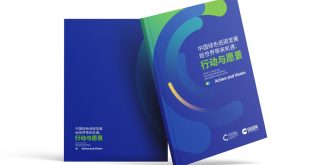By JAN YUMUL and XU WEIWEI in Hong Kong

A G7 logo is seen on an information sign near the Carbis Bay hotel resort in St Ives, Cornwall, southwest Britain, May 24, 2021. [Photo/Agencies]
A plan by the Group of Seven to help developing nations scale up infrastructure can only complement, rather than replace, the China-led Belt and Road Initiative, which has already forged deep ties in many parts of the world, according to experts.
As people wish the G7’s plan would be paired with the BRI, potential conditions attached to financial aid from the West would make it easier for many nations to ultimately conclude that sticking to the BRI would be more beneficial.
Arhama Siddiqa, a research fellow at the Pakistan-based Institute of Strategic Studies Islamabad, said the “Build Back Better World” program, or the B3W, thatthe G7 adopted on June 12 during the London summit must look at strategic objectives and interests that could align with the BRI in areas such as economic development.
“Middle Eastern states do not depend on financial support from either China or the US. Their main goals are aimed at their respective rejuvenation projects and thwarting their dependency on oil,” Siddiqa said.
Still, developing economies, including those in the Persian Gulf region, which are seeking new development paths to reduce reliance on oil, could face a balancing act.
That said, China could be a more reliable partner, the analyst said, as was evident from Washington’s withdrawal of support to Saudi-led operations in Yemen during US President Joe Biden’s first weeks in office.
The B3W plan-revealed by the United States, Canada, the United Kingdom, France, Germany, Italy and Japan-is aimed at helping to narrow the $40 trillion in infrastructure needed in developing countries. The program is forecast to rival the Beijing-initiated BRI, introduced in 2013 by President Xi Jinping to promote better linkage between Asia, Europe and Africa through infrastructure-related projects.
In his July 1 speech marking the centenary of the Communist Party of China, Xi, who is also general secretary of the Party, again spoke of promoting open, clean and high-quality BRI development “through joint efforts”, instead of competing with one another, noted Karori Singh, former director and emeritus fellow of South Asia Studies Centre at India’s University of Rajasthan.
Xi suggests using “China’s new achievements in development as providing the world with new opportunities” and that the BRI has demonstrated “a clear resolve for close cooperation and collaboration in enforcing multilateralism”, Singh said.
Farhan Mujahid Chak, an associate professor of political science in Gulf Studies Centre at Qatar University, said it “would be more productive” for the G7 to join the BRI and contribute toward global economic development, rather than “to compete and undermine it”.
“The linkages of the Middle East and China are growing, and the trend is that this trajectory is likely to intensify,” Chak said.
The Green BRI Center, which provides research and advisory services in relation to ecologically friendly BRI projects, has reported that, as of January, at least 140 countries and regions have signed memorandums of understanding related to the BRI and that 17 of those nations were from the Middle East.
The B3W, according to the White House’s fact sheet, will cover from Latin America and the Caribbean to some parts of Africa and Asia.
Scott Livermore, chief economist at Oxford Economics Middle East, said the B3W can “provide a potentially important source of funding for development plans”, especially to low-to middle-income countries in the Middle East, but what will be critical to the impact of the B3W is the accessibility of funds and conditions attached to the program.
“If the countries can use the funding in addition to BRI infrastructure investment, then it could be quite beneficial,” Livermore said.
Qatar University’s Chak said the emphasis of the B3W slogan-Building Back a Better World-was on “back”. The aim, Chak said, seemed to be on “bringing back Western hegemony in order to maintain their privilege and power”.
Even if the program generates the kind of support and enthusiasm the B3W leaders want, Chak does not think it will replace the BRI.
ISSI’s Siddiqa said there is no doubt that the implementation of the Sustainable Development Goal 2030 Agenda needs substantial external means of financing from rich industrialized nations.
Siddiqa noted that as Biden’s aid proposal “will be attached to conditions circling around human rights, climate change, corruption and the rule of law”, developing countries “would rather choose China” because of its nonintrusive policies.
However, if the B3W is pushed hard, Siddiqa said, Middle Eastern countries may be forced to take industry-specific sides, citing the case of the Chinese-backed digital version of the BRI, the Digital Silk Road.
She said this led to the “bifurcation between the West and China “in global telecom infrastructure, as was highlighted by the efforts of the US and UK to boycott Chinese technology giant Huawei.
Therefore, Singh from India said, the B3W and BRI “must operate in tandem rather than opposition to ensure development and well-being of the people in developing countries for a harmonious, peaceful and prosperous world.”
China Daily Global
 Africa -China Review Africa -China Cooperation and Transformation
Africa -China Review Africa -China Cooperation and Transformation
